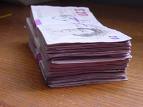Once again, the UK economy is in focus as the latest data release offers disappointment. Manufacturing production in August fell 0.3 percent, and analysts are once again returning to the fact that the British economy saw quarter two growth at just 0.1 percent.
It’s really no surprise that, given the extremely slow nature of the economic recovery in Britain, the MPC announced another round of quantitative easing. QE in Britain is meant to help stimulate the economy, but there are also concerns. Inflation has been higher than expected, and QE could make inflation worse. And, of course, the difficulties could mean more weakness for the UK pound.
Indeed, some believe that the latest round of lackluster data is likely to trigger another slide in the sterling. Even though the pound is higher against the Canadian dollar right now, there is a chance that the slow economic recover will result in losses to the loonie before long. Pound is already losing ground to the US dollar right now, but that could be due to risk aversion.
Also not helping the pound: Its low rate. The Bank of England has kept rates relatively low. While British rates aren’t as low as those in the US or Japan, they are still low enough to be a funding currency for the carry trade, which means that sterling could find itself down against commodity currencies.
At 13:16 GMT, GBP/USD is down to 1.5616 from the open at 1.5668. EUR/GBP is lower, down to 038698 from 0.8708, and GBP/CAD is higher, with the pound up to 1.6109 from the open at 1.0673.
If you have any questions, comments or opinions regarding the Great Britain Pound,
feel free to post them using the commentary form below.
